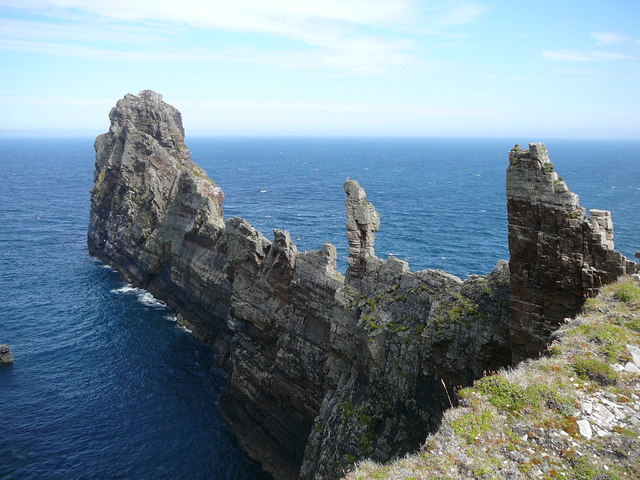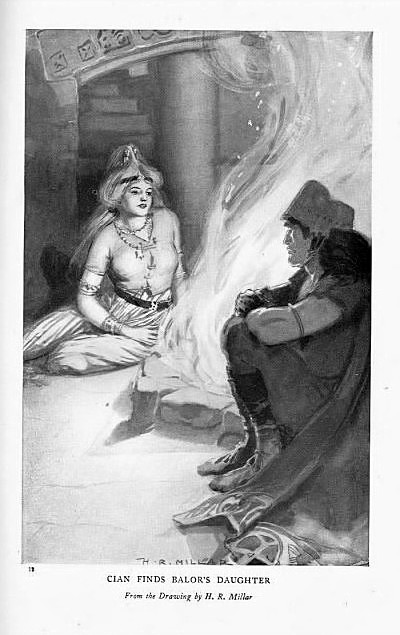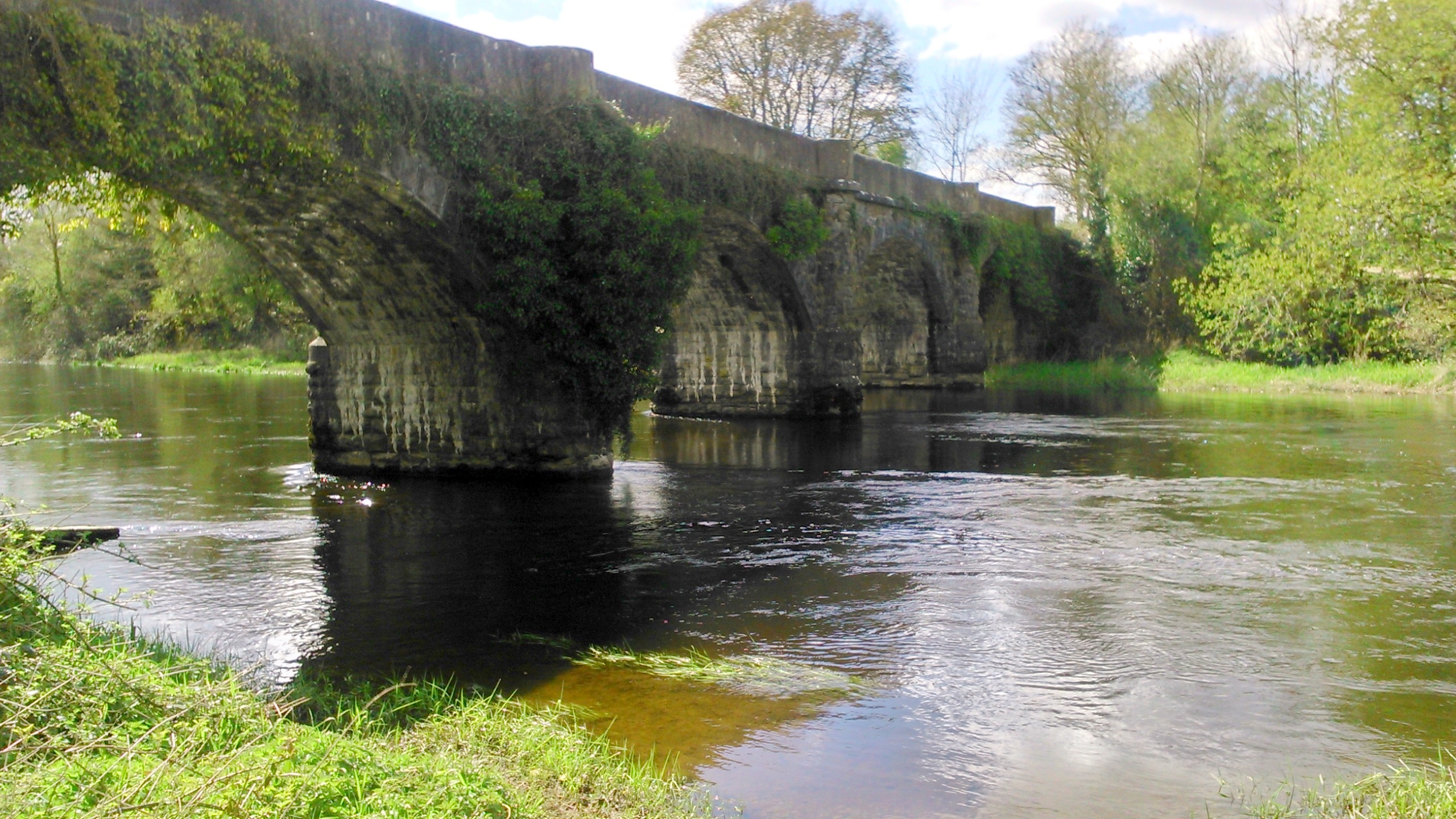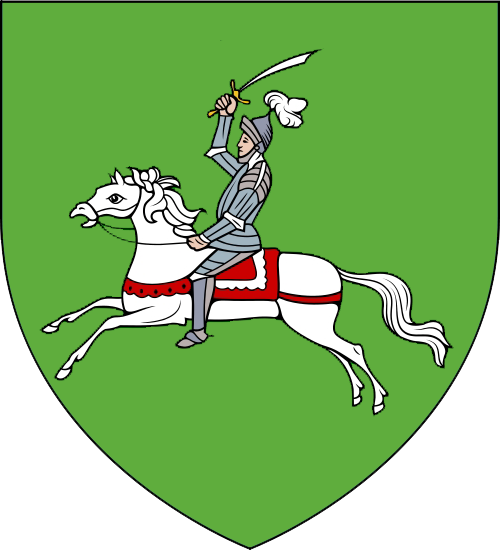|
Cethlenn
In Irish mythology, Caitlín ( sga, Cethlenn, Cethleann, Ceithlenn, Ceithlionn, italic=no) was the wife of Balor of the Fomorians and, by him, the mother of Ethniu. She was also a prophetess and warned Balor of his impending defeat by the Tuatha Dé Danann in the second battle of Magh Tuiredh. During that battle she wounded the Dagda with a projectile weapon. She was also known by the nickname Cethlenn of the Crooked Teeth. Name Ceithlinn in modern Irish is pronounced like "Kehlen", and her name is sometimes indicated by that spelling. Kethlenda is the form of the name that appeared in Roderick O'Flaherty's ''Ogygia'' or ''Rerum Hibernicarum Chronologia'', written in Latin, reused as "Kethlenda of the Crooked Teeth" by story-reteller P. W. Joyce. ;Nickname Ceithlinn is called by the nickname Ceithlion Chaisfhiaclach "the crooked toothed" in the ''Oidheadh Chloinne Tuireann'', also translatable as "twisted teeth", from Irish ''cas'' 'twisted'. She is also glossed as being "buck- ... [...More Info...] [...Related Items...] OR: [Wikipedia] [Google] [Baidu] |
Enniskillen
Enniskillen ( , from ga, Inis Ceithleann , ' Ceithlenn's island') is the largest town in County Fermanagh, Northern Ireland. It is in the middle of the county, between the Upper and Lower sections of Lough Erne. It had a population of 13,823 at the 2011 Census. Enniskillen Castle was built in the 15th century as a stronghold of the Maguires, before coming under English control in the early 17th century. The castle and town were expanded during the Plantation of Ulster. It was the seat of local government for the former Fermanagh District Council, and is the county town of Fermanagh. Toponymy The town's name comes from the ga, Inis Ceithleann. This refers to Cethlenn, a figure in Irish mythology who may have been a goddess. Local legend has it that Cethlenn was wounded in battle by an arrow and attempted to swim across the River Erne, which surrounds the island, but she never reached the other side, so the island was named in reference to her. It has been anglicised many way ... [...More Info...] [...Related Items...] OR: [Wikipedia] [Google] [Baidu] |
Balor
In Irish mythology, Balor or Balar was a leader of the Fomorians, a group of malevolent supernatural beings. He is often described as a giant with a large eye that wreaks destruction when opened. Balor takes part in the Battle of Mag Tuired, and is primarily known from the tale in which he is killed by his grandson Lugh of the Tuatha Dé Danann. He has been interpreted as a personification of the scorching sun, and has also been likened to figures from other mythologies, such as the Welsh Ysbaddaden and the Greek Cyclops. Name The name ''Balor'' or The Lonni may come from Common Celtic ''*Boleros'', meaning "the flashing one". In the early literature he is also referred to as ''Balor Béimnech'' (Balor the smiter), ''Balor Balcbéimnech'' (Balor the strong smiter), ''Balor Birugderc'' (Balor of the piercing-eye), ''Balor mac Doit meic Néid'' (Balor, son of Dot son of Nét) or ''Balor ua Néit'' (Balor, grandson of Nét). Later forms are ''Balor Béimeann'' or ''Balar Bemen ... [...More Info...] [...Related Items...] OR: [Wikipedia] [Google] [Baidu] |
Ethniu
In Irish mythology, Ethniu (), or Eithne ( Modern Irish pronunciation: ) in modern spelling, is the daughter of the Fomorian leader Balor, and the mother of Lugh. She is also referred to as Ethliu (modern Eithle), Eithlionn (genitive; modern Eithleann), and Ethlinn (dative; modern Eithlinn). Name Ethniu is a fine example of the difficulty of conducting research into Irish mythology. Her oldest version of her name is probably Ethliu or Ethniu, giving rise to the modern Irish name Eithne. However thanks to changes in the Irish language, the lack of standardised spelling for many centuries, and attempts to anglicise the name, variations have arisen. Linguistic ignorance has further confused the issue: the genitive form of ''Ethniu'' is ''Ethnenn'' (modern ''Eithneann'') and the genitive of ''Ethliu'' is ''Ethlenn/Ethlinn'' (modern ''Eithleann/Eithlinn''), as in ''mac Ethlenn'' ("Ethliu's son"). This genitive has often been taken for a nominative, or a mistaken nominative has b ... [...More Info...] [...Related Items...] OR: [Wikipedia] [Google] [Baidu] |
Formorians
The Fomorians or Fomori ( sga, Fomóire, Modern ga, Fomhóraigh / Fomóraigh) are a supernatural race in Irish mythology, who are often portrayed as hostile and monstrous beings. Originally they were said to come from under the sea or the earth. Later, they were portrayed as sea raiders and giants. They are enemies of Ireland's first settlers and opponents of the Tuatha Dé Danann, the other supernatural race in Irish mythology; although some members of the two races have offspring. The Tuath Dé defeat the Fomorians in the '' Battle of Mag Tuired''. This has been likened to other Indo-European myths of a war between gods, such as the Æsir and Vanir in Norse mythology and the Olympians and Titans in Greek mythology. One theory is that the Fomorians were supernatural beings representing the wild or destructive powers of nature; personifications of chaos, darkness, death, blight and drought.MacCulloch, John Arnott. ''The Religion of the Ancient Celts''. The Floating Press, ... [...More Info...] [...Related Items...] OR: [Wikipedia] [Google] [Baidu] |
Fomorians
The Fomorians or Fomori ( sga, Fomóire, Modern ga, Fomhóraigh / Fomóraigh) are a supernatural race in Irish mythology, who are often portrayed as hostile and monstrous beings. Originally they were said to come from under the sea or the earth. Later, they were portrayed as sea raiders and giants. They are enemies of Ireland's first settlers and opponents of the Tuatha Dé Danann, the other supernatural race in Irish mythology; although some members of the two races have offspring. The Tuath Dé defeat the Fomorians in the '' Battle of Mag Tuired''. This has been likened to other Indo-European myths of a war between gods, such as the Æsir and Vanir in Norse mythology and the Olympians and Titans in Greek mythology. One theory is that the Fomorians were supernatural beings representing the wild or destructive powers of nature; personifications of chaos, darkness, death, blight and drought.MacCulloch, John Arnott. ''The Religion of the Ancient Celts''. The Floating Press, 2 ... [...More Info...] [...Related Items...] OR: [Wikipedia] [Google] [Baidu] |
The Dagda
The Dagda (Old Irish: ''In Dagda,'' ga, An Daghdha, ) is an important god in Irish mythology. One of the Tuatha Dé Danann, the Dagda is portrayed as a father-figure, king, and druid.Koch, John T. ''Celtic Culture: A Historical Encyclopedia''. ABC-CLIO, 2006. pp. 553–54 An Dagda Mary Jones's Celtic Encyclopedia. He is associated with , , manliness and strength, as well as magic, druidry and wisdom.Ó hÓgáin, Dáithí. ''Myth, Legend & Romance: An encyclopaedia of the Irish folk ... [...More Info...] [...Related Items...] OR: [Wikipedia] [Google] [Baidu] |
River Erne
The River Erne ( , ga, Abhainn na hÉirne or ''An Éirne'') in the northwest of the island of Ireland, is the second-longest river in Ulster, flowing through Northern Ireland and the Republic of Ireland, and forming part of their border. Course The Erne rises on the east shoulder of Slieve Glah mountain three miles south of Cavan in County Cavan, Republic of Ireland, and flows 80 miles (129 km) through Lough Gowna, Lough Oughter and Upper and Lower Lough Erne, County Fermanagh, Northern Ireland, to the sea at Ballyshannon, County Donegal back in the Republic. The river is 120 kilometres long and is used for fly fishing for trout and salmon, with a number of fisheries along both the river itself and its tributaries. The town of Enniskillen is mostly situated on an island in the river, between Upper and Lower Lough Erne. It is linked to the River Shannon by the Shannon–Erne Waterway. The total catchment area of the River Erne is 4,372 km2. The long-term ... [...More Info...] [...Related Items...] OR: [Wikipedia] [Google] [Baidu] |
Maguire Of Fermanagh
The MacGuire ( ) family is an Irish clan based in County Fermanagh. The name derives from the Gaelic , which is "son of Odhar" meaning "dun", "dark one". According to legend, this relates to the eleventh descendant of Colla da Chrich, great-grandson of Cormac mac Airt, who was monarch of Ireland about the middle of the third century. From the 13th to the 17th centuries, the MacGuires were kings of Fermanagh. Naming conventions The surname has been anglicized variously as McGuire, McGwire, McGwyre and most commonly, Maguire (from variant Irish spelling ''Mag Uidhir''). History The MacGuire sept is primarily associated with modern-day County Fermanagh. They possessed the entire county, also known as Maguire's Country, from about 1250 C.E. and maintained their independence as Lords of Fermanagh down to the reign of King James VI & I, when their country was confiscated like other parts of Ulster. The MacGuires supplied Chiefs or Princes to Fermanagh, from about A.D. 1264, when th ... [...More Info...] [...Related Items...] OR: [Wikipedia] [Google] [Baidu] |
Énrí Ó Muirgheasa
Énrí Ó Muirgheasa (Henry Morris) (14 January 1874 – 13 August 1945), was an Irish civil servant, Irish language scholar, folklore collector, historian and writer. Early life and family Ó Muirgheasa was born in Cashlan East, Lisdoonan, Donaghmoyne, County Monaghan on 14 January 1874. He was a son of Lúcas Ó Muirgheasa, a farmer, and Máire Nic Ward. He attended Lisdoonan school but learned to read and write Irish from his granduncle, Proinsias Ó Conghaile. Ó Muirgheasa married harpist and fellow teacher, Eibhlín Ní Raghallaigh (Helen O'Reilley) of Dundalk in 1906. Their son, Colum, was born and died in 1907. Eibhlín died in 1908. In 1912, he remarried to Máire Woods from County Galway. Ó Muirgheasa died on 13 August 1945 in Strabane. Career He was appointed monitor at Lisdoonan school in 1888, where he established the first Monaghan branch of the Gaelic League. Ó Muirgheasa graduated as a teacher from St. Patrick's College, Drumcondra, in 1900, obtaining a teach ... [...More Info...] [...Related Items...] OR: [Wikipedia] [Google] [Baidu] |
Irish Mythology
Irish mythology is the body of myths native to the island of Ireland. It was originally passed down orally in the prehistoric era, being part of ancient Celtic religion. Many myths were later written down in the early medieval era by Christian scribes, who modified and Christianized them to some extent. This body of myths is the largest and best preserved of all the branches of Celtic mythology. The tales and themes continued to be developed over time, and the oral tradition continued in Irish folklore alongside the written tradition, but the main themes and characters remained largely consistent. The myths are conventionally grouped into ' cycles'. The Mythological Cycle consists of tales and poems about the god-like Túatha Dé Danann, who are based on Ireland's pagan deities, and other mythical races like the Fomorians. Important works in the cycle are the ''Lebor Gabála Érenn'' ("Book of Invasions"), a legendary history of Ireland, the '' Cath Maige Tuired'' ("Ba ... [...More Info...] [...Related Items...] OR: [Wikipedia] [Google] [Baidu] |
Tory Island
Tory Island, or simply Tory (officially known by its Irish name ''Toraigh''),Toraigh/Tory Island . is an island off the north-west coast of , Ireland, and is the most remote inhabited island of Ireland. The name means "place of steep rocky heights". Language The main spoken language on the island is |
.jpg)






.jpg)
